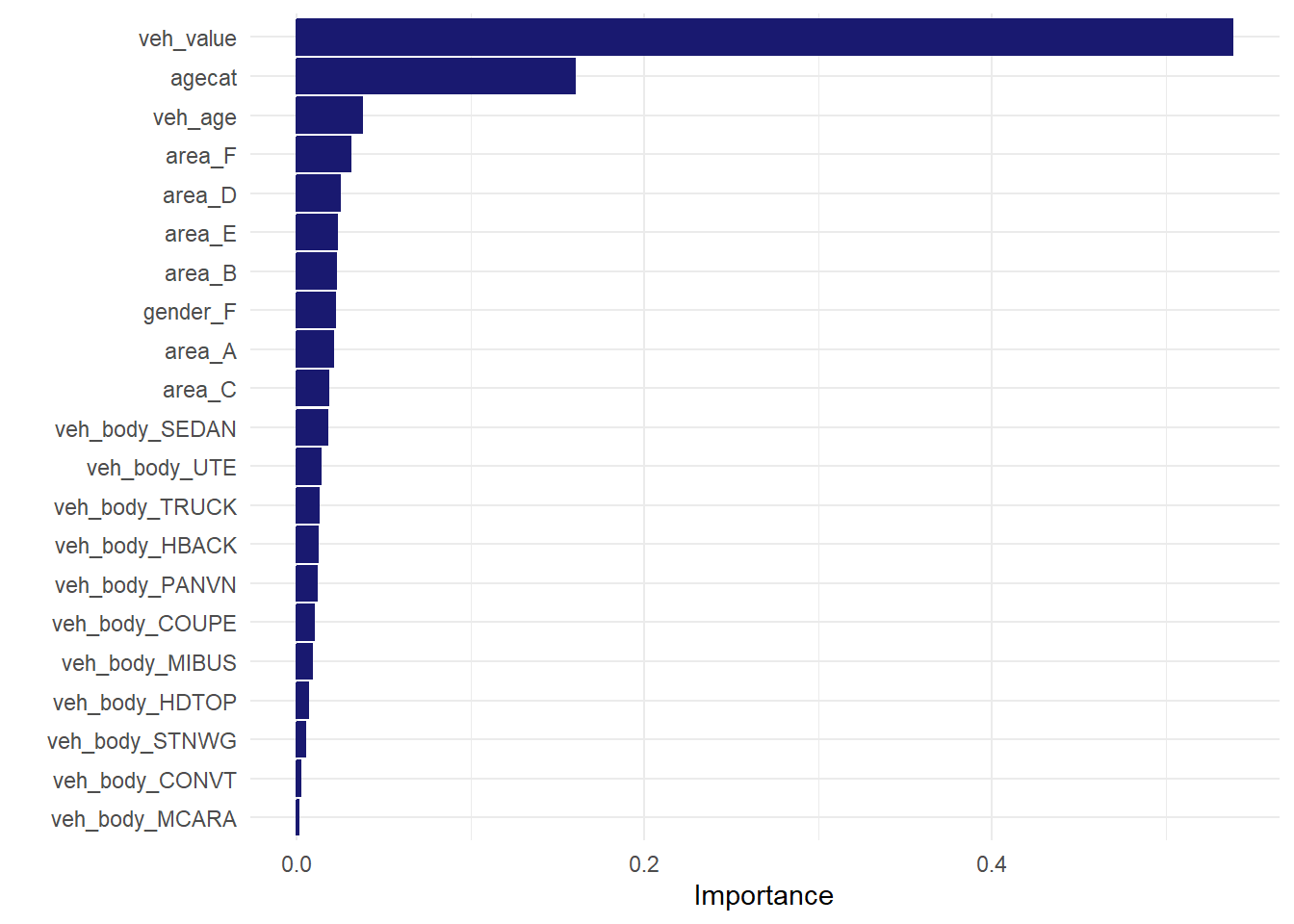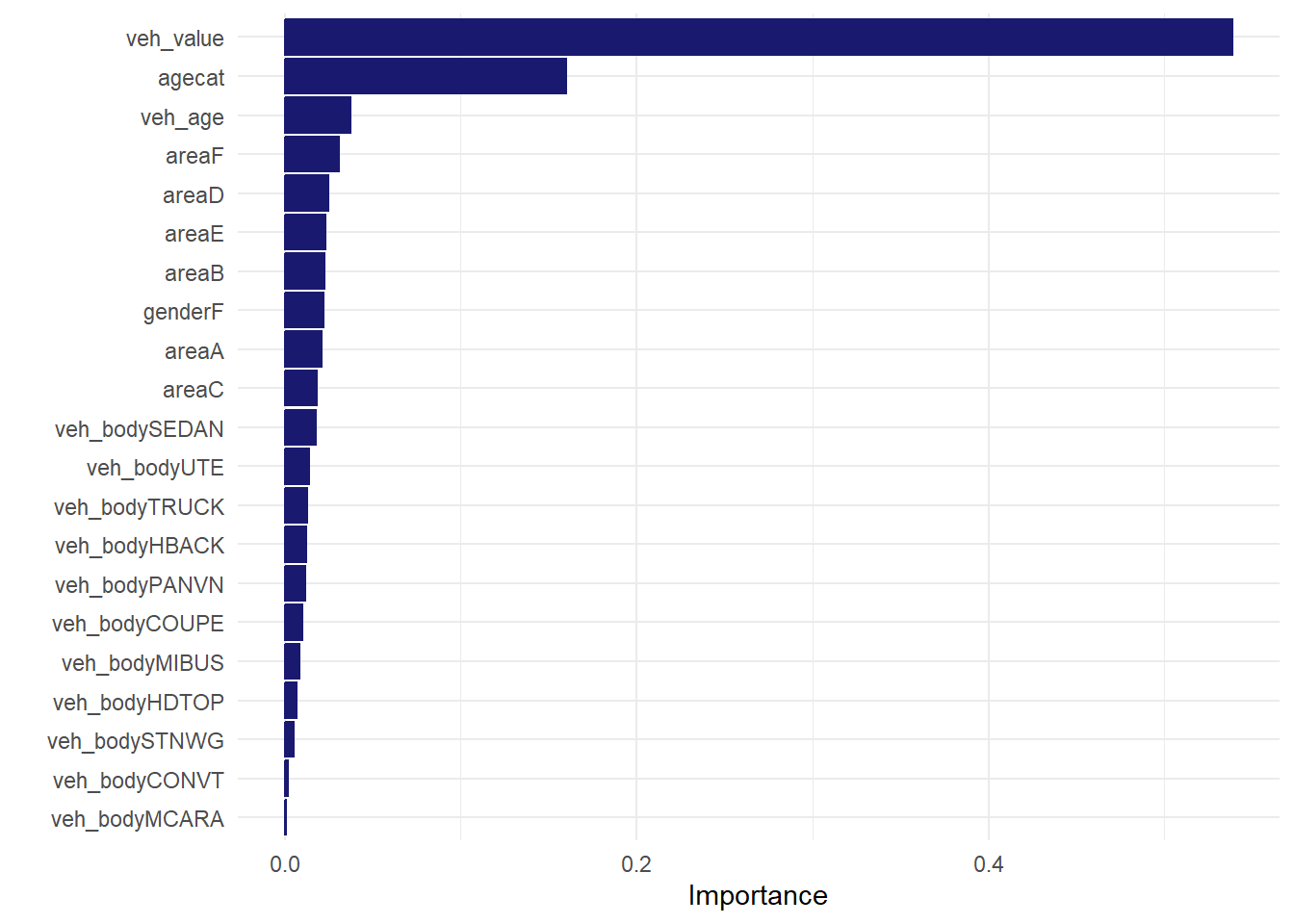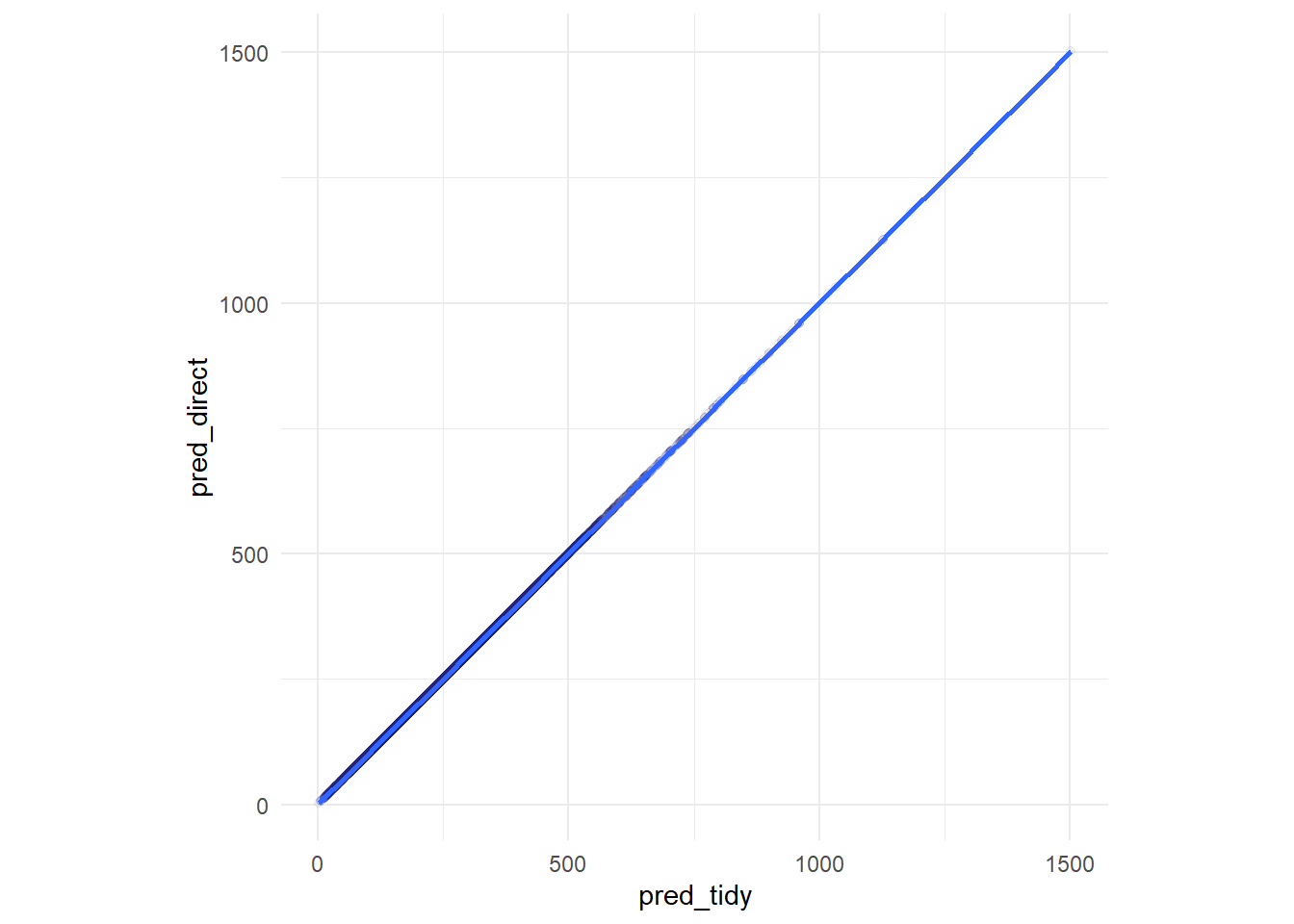Rows: 50,893
Columns: 18
$ has_claim <int> 0, 0, 0, 0, 0, 0, 0, 0, 0, 1, 1, 0, 0, 0, 0, 0, 0, 0,…
$ dollar_loss <dbl> 0.0000, 0.0000, 0.0000, 0.0000, 0.0000, 0.0000, 0.000…
$ exposure <dbl> 0.64887064, 0.56947296, 0.85420945, 0.85420945, 0.555…
$ veh_value <dbl> 1.03, 3.26, 2.01, 1.60, 1.47, 0.52, 1.38, 1.22, 1.00,…
$ veh_body <dbl> -2.384210, -2.480687, -2.156805, -2.114655, -2.384210…
$ veh_age <int> 2, 2, 3, 3, 2, 4, 2, 3, 2, 3, 3, 4, 3, 1, 4, 1, 2, 4,…
$ agecat <int> 4, 2, 4, 4, 6, 3, 2, 4, 4, 4, 4, 2, 3, 1, 5, 1, 2, 3,…
$ loss_cost <dbl> 0.0000, 0.0000, 0.0000, 0.0000, 0.0000, 0.0000, 0.000…
$ policy_id <dbl> 2, 3, 6, 7, 7, 8, 10, 11, 12, 16, 16, 17, 18, 19, 19,…
$ random <dbl> 0.937075413, 0.286139535, 0.519095949, 0.736588315, 0…
$ has_claim_fct <fct> no, no, no, no, no, no, no, no, no, yes, yes, no, no,…
$ exposure_weight <imp_wts> 0.64887064, 0.56947296, 0.85420945, 0.85420945, 0…
$ policy_loss_cost <dbl> 0.0000, 0.0000, 0.0000, 0.0000, 0.0000, 0.0000, 0.000…
$ gender_M <dbl> 0, 0, 1, 1, 1, 0, 1, 1, 0, 0, 1, 0, 0, 1, 1, 0, 0, 1,…
$ area_B <dbl> 0, 0, 0, 0, 1, 0, 0, 0, 0, 0, 0, 0, 0, 0, 0, 1, 0, 0,…
$ area_C <dbl> 0, 0, 1, 0, 0, 0, 0, 1, 1, 0, 1, 0, 1, 0, 1, 0, 0, 1,…
$ area_D <dbl> 0, 0, 0, 0, 0, 0, 0, 0, 0, 0, 0, 1, 0, 0, 0, 0, 0, 0,…
$ area_other <dbl> 0, 1, 0, 0, 0, 0, 0, 0, 0, 1, 0, 0, 0, 0, 0, 0, 0, 0,…














